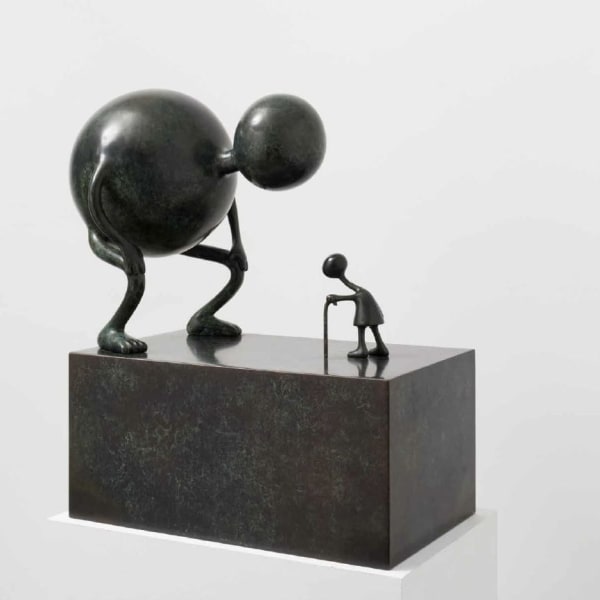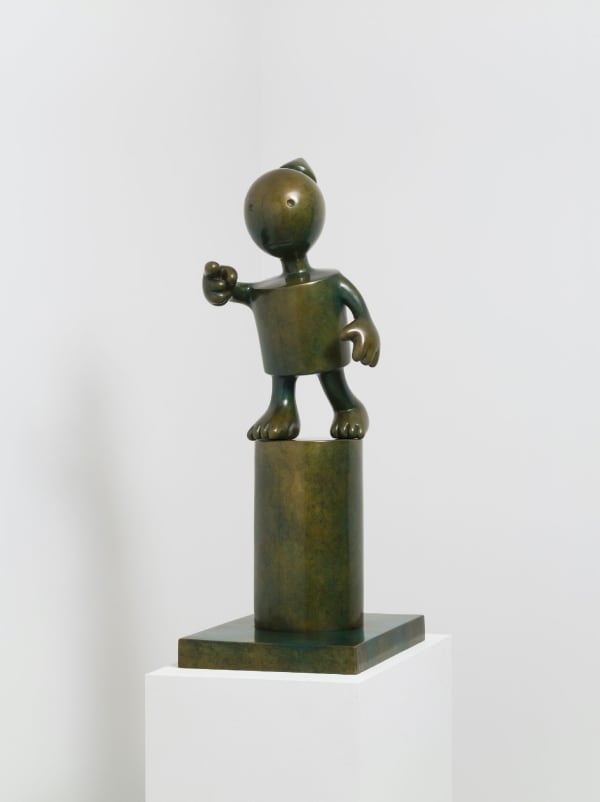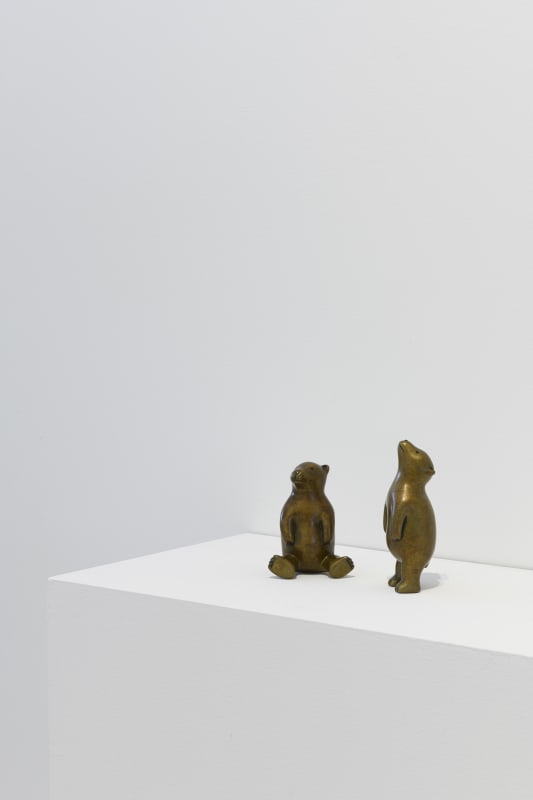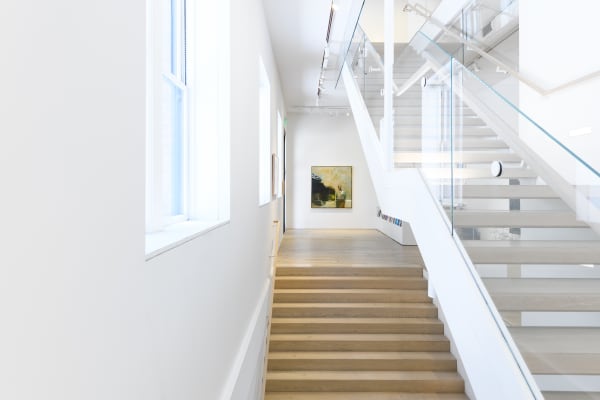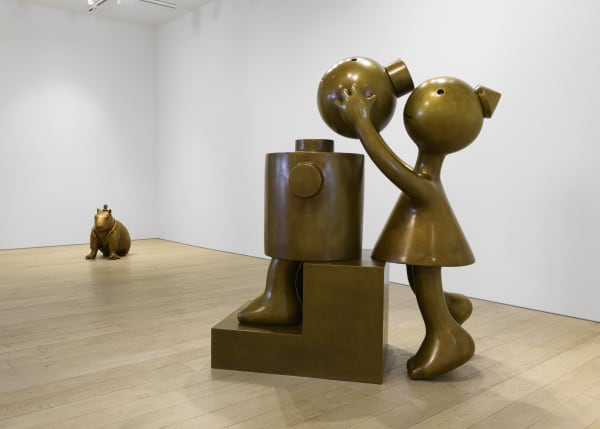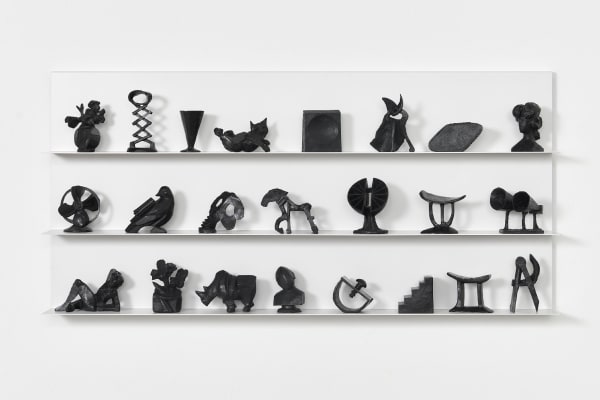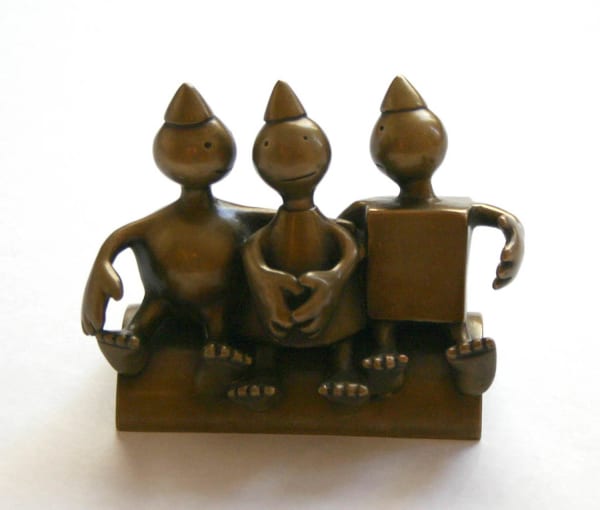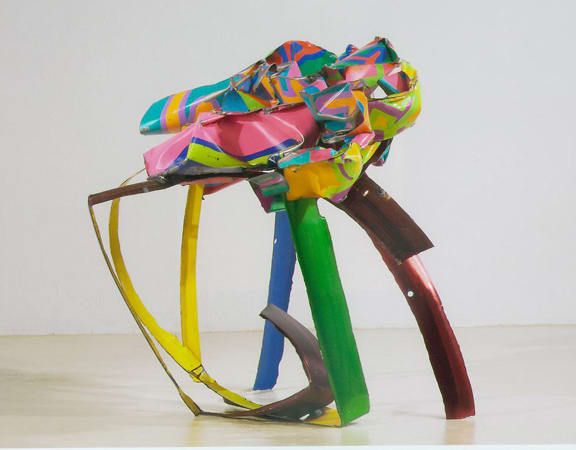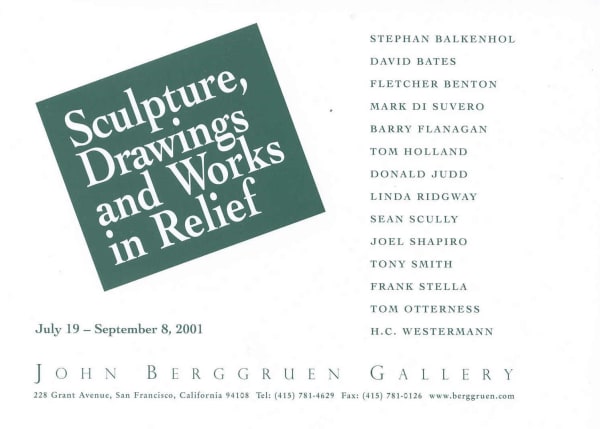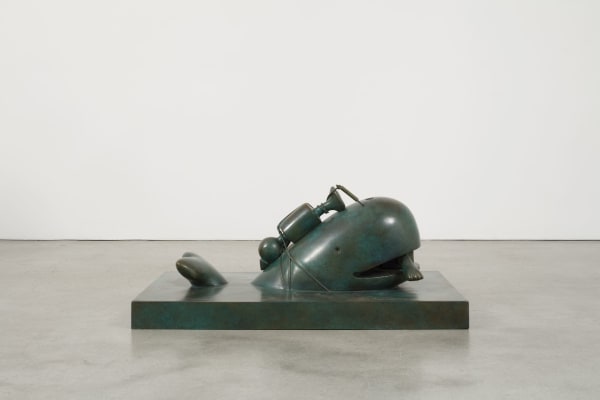Tom Otterness American, b. 1952
-
-
Biography
Tom Otterness (b. 1952, Wichita, Kansas) is an iconic American sculptor celebrated for his whimsical, satirical bronze figures that animate public spaces across the globe. Since the 1970s, Otterness has focused on public art, creating cast metal characters—ranging from palm-sized to monumental—that offer witty social commentary and moments of levity in everyday urban life.
Otterness began his career in 1978 as a member of Collaborative Projects (Colab), a pioneering community of independent artists in New York City. He has since devoted much of his practice to site-specific commissions that enliven parks, plazas, subway stations, libraries, courthouses, museums, and hospitals. Among his most beloved works is Life Underground (2004), a multi-figure bronze installation for the New York Metropolitan Transportation Authority at the 14th Street–Union Square subway station, which captures his signature blend of humor and insight.
Employing the traditional lost-wax process, Otterness sculpts spirited creatures that reflect on social structures, human emotion, and fabled idioms. His work can be found in cities around the world, including installations in Münster, Germany (1993); Toronto, Canada (2007); Seoul, South Korea (2010); and a sprawling public park in Scheveningen, the Netherlands (2004). In the United States, he has completed over three dozen public commissions, including a project at the Zuckerberg San Francisco General Hospital and Trauma Center.
-
Selected Public Collections & Commissions
The Museum of Modern Art (MoMA), New York
The Metropolitan Museum of Art, New York
Whitney Museum of American Art, New York
National Gallery of Art, Washington DC
San Francisco Museum of Modern Art (SFMOMA)
Brooklyn Museum, New York
Carnegie Museum of Art, Pittsburgh, Pennsylvania
Denver Art Museum, Denver, Colorado
Yale University Art Gallery, New Haven, Connecticut
Israel Museum, Jerusalem
Life Underground, 14th Street–Eighth Avenue Subway, New York
Überfrau, Münster, Germany, (1993)
Immigrant Family, Toronto, Canada, (2007)
Free Money, Seoul, South Korea, (2010)
Fairy Tale Sculptures by the Sea (SprookjesBeelden aan Zee), Scheveningen/The Hague, Netherlands, (2004)
The Real World, Rockefeller Park, Battery Park City, New York, (1992) -
Publications
-
Exhibitions
-

55 Years
Isn't That Long Enough? Jun 26 – Aug 14, 2025Featuring paintings, works on paper, sculpture, film, and archival ephemera from the SFMOMA Library, and SFAI archive, this ambitious exhibition showcases museum-quality works by contemporary and historical artists, illustrating Berggruen...View More -

Her Voice
An Exhibition in Honor of Gretchen Berggruen Nov 10 – Dec 23, 2022I am honored to present this exhibition, Her Voice, in honor of my late wife, Gretchen Berggruen. Co-owner of Berggruen Gallery, Gretchen was the heart and soul of the gallery. This group show features more than thirty artists, all of whom Gretchen championed, worked closely alongside, and deeply admired. This exhibition reflects Gretchen’s vision and her great passion in life. Those who had the pleasure to have known her know the deep level of care and attention with which she always acted. Her expertise, drive, kindness, patience, and perseverance drove the gallery to be what it is today. Gretchen was my partner and our leader, and I am proud to present Her Voice, celebrating her life and all that she built. – John BerggruenView More
Featuring artworks by the following artists:
Diana Al-Hadid | John Alexander | Jennifer Bartlett | Cecily Brown | Christopher Brown | Squeak Carnwath | Bruce Cohen | Roseline Delisle | Mark di Suvero | Richard Diebenkorn | Austin Eddy | Helen Frankenthaler | Jane Hammond | Stephen Hannock | Shara Hughes | William Kentridge | Clare Kirkconnell | Julian Lethbridge | Alicia McCarthy | Tom McKinley | Julie Mehretu | Elizabeth Murray | Tom Otterness | Martin Puryear | Linda Ridgway | Joel Shapiro | Judith Shea | Kiki Smith | Mark Tansey | Wayne Thiebaud | Fiona Waterstreet -

Tom Otterness
Sep 1 – Oct 29, 2022Berggruen Gallery is proud to present Tom Otterness, an exhibition of sculptures by renowned New York based artist, Tom Otterness. This show marks Otterness’s fifth solo exhibition with the gallery and will be on view September 1 through October 1, 2022. The gallery will host a reception for the artist on Thursday, September 8, 2022, from 5:00 to 7:00pm.View More
Tom Otterness, an iconic American sculptor, is celebrated for his bronze figures that animate public spaces throughout the world. His career began in 1978, when he became a member of Collaborative Projects, a pioneering community of independent artists in New York City, and he has since focused much of his work on site-specific projects. Otterness’s public works are highly recognizable and widely appreciated, such as his popular 2004 multi figure sculptural installation Life Underground for New York Metropolitan Transportation at the 14th Street Union Square subway station. Otterness’s spirited creatures generate moments of pause in busy urban life, allowing each passersby experiences of levity and satire while going about their daily lives. Otterness employs the lost-wax process to create his cast metal figures, ranging from palm-sized to monumental. His characters relay witty commentary and discerning truths on social matters, human emotions, and fabled idioms. This exhibition presents a survey of Otterness’s sculptures from 1999 to 2022, including personified animals and humanoid figures, some of which simply serve to lighten the viewer’s mood with a smile, while others tackle themes of economic disparity and political injustice.
Otterness transforms bronze into comical themes and whimsical remarks on commonplace fables using his creatures as the characters—capybaras, armadillos, and cows, to name a few. The artist’s nearly life-sized bronze sculpture, Cash Cow, humorously addresses American capitalism and economics. His capybara duo plays with constructed gender identities and societal norms through their clothing and accessories—Female Capybara wears a pearl necklace and high heels, while Male Capybara wears a top hat and suit.
Otterness’s figures explore a spectrum of sentiments. Sad Sphere depicts a sorrowful or overwhelmed figure hunched over with his head held defeatedly between his hands. In Youth and Age, Otterness juxtaposes the tensions and relationships between young and old, placing the overinflated confidence of adolescence—Youth—opposing the diminutive stature of an elderly figure—Age. Overshadowed by the physical dominance of Youth, Age is bent over his cane, but simultaneously, Youth appears to crouch down to hear the wisdom of Age. This work is but one example of how Otterness uniquely comments on the human condition with specificity and wit.
Long has John Berggruen Gallery worked with and admired the art of Tom Otterness, first presenting a solo exhibition in 1987. Now, almost two decades after his last solo show with the gallery, John Berggruen is excited to work with Otterness and celebrate their enduring friendship once again.
Otterness’s sculpture has been exhibited widely both nationally and internationally. He has had numerous solo museum exhibitions and public installations, including, Making Hay, Crystal Bridges Museum of Art, Bentonville, Arkansas; Tom Otterness in Grand Rapids: The Gardens to The Grand, Grand Rapids, Michigan; and Tom Otterness on Broadway, from Columbus Circle to 168th Street in New York City, New York; organized by the New York City Department of Parks & Recreation. His work can be seen in many public collections such as the Guggenheim Museum, New York, the Whitney Museum of American Art, New York, the Museum of Modern Art, New York, the Carnegie Museum of Art, Pittsburgh, Pennsylvania; the San Francisco Museum of Modern Art, San Francisco; and The Miyagi Museum of Art in Sendai, Japan. He lives and works in New York.
Tom Otterness September 1- October 1, 2022. On view at 10 Hawthorne Street, San Francisco, CA 94105. Images and preview are available upon request. For all inquiries, please contact the gallery by phone (415) 781-4629 or by email info@berggruen.com. -

Major Contemporary Works
May 16 – Aug 31, 2019Berggruen Gallery is pleased to present Major Contemporary Works, an exhibition of paintings, drawings, and sculptures by important contemporary artists. This show will be on view May 16 - July 6, 2019.View More
Tauba Auerbach | Cecily Brown | Christo | Tony Cragg | Sarah Crowner | John Currin | Mark di Suvero
Spencer Finch | Günther Förg | Danny Fox | Michelle Grabner | Shara Hughes | William Kentridge
Alicia McCarthy | Beatriz Milhazes | Sarah Morris | Odili Donald Odita | Tom Otterness
Martin Puryear | Joel Shapiro | Jenny Sharaf | Kiki Smith | Lucy Williams
Major Contemporary Works, May 16 - July 6, 2019. On view at 10 Hawthorne Street, San Francisco, CA 94105. Images and preview are available upon request. For all inquiries, please contact the gallery by phone (415) 781-4629 or by email info@berggruen.com. -

The Bear Necessities
Feb 2 – Mar 17, 2012View More -

The Art of Giving
Dec 9, 2010 – Jan 19, 2011View More -

Tom Otterness
Recent Sculpture: Several Strange Objects Sep 9 – Oct 9, 2004Tom Otterness, who began his career as a public artist in 1978, continues his signature work with figurative cast bronze sculpture. His "button-faced" figures exemplify the human experience with a distinctive combination of narrative, whimsy, economic and political commentary. This exhibition features a selection of work that was inspired by lesser known tales, fables, and allegories. As always, Otterness' characters suggest a reinterpretation of popular culture as they combine truth, wit and satire.View More
Several Strange Objects is Tom Otterness' fourth solo exhibition at the John Berggruen Gallery. Otterness' sculpture has been widely exhibited and commissioned nationally and internationally. His work can be seen in numerous public collections such as the Guggenheim Museum, New York, the Whitney Museum of American Art, New York, the Museum of Modern Art, New York, the Carnegie Museum of Art, Pittsburgh, Pennsylvania, and The Miyagi Museum of Art in Sendai, Japan. -

Sculpture and Form
Jun 3 – Sep 4, 2004View More -

Sculptures, Drawings, and Works in Relief
Jul 19 – Sep 8, 2001View More
-
-
Art Fairs
-
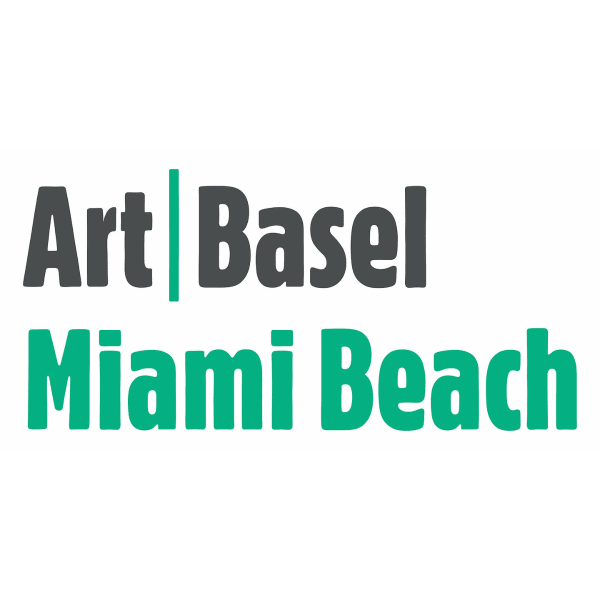
Art Basel Miami Beach
Miami Beach, Florida Dec 4 – 7, 2025Berggruen Gallery is delighted to participate in the 2025 edition of Art Basel Miami Beach. 2025 marks Berggruen Gallery’s twenty-third consecutive year participating in ABMB,...View More -

The San Francisco Fall Show
San Francisco, California Oct 15 – 19, 2025Berggruen Gallery is delighted to participate in the 2025 San Francisco Fall Show. Please visit us at The Festival Pavilion at The Fort Mason Center. Tickets are required for all show dates. Exhibiting artists to be announced.View More -

The Armory Show
New York City, New York Sep 4 – 7, 2025Berggruen Gallery is proud to participate in The Armory Show 2025. Please visit us at Booth 400 at the Javits Center in New York. Tickets...View More -

Art Basel Miami Beach
Miami Beach, Florida Dec 4 – 9, 20242024 will mark Berggruen Gallery’s twenty-second consecutive year participating in Art Basel Miami Beach, since the fair’s inception.View More -

The Armory Show
New York City, New York Sep 5 – 8, 2024Berggruen Gallery is pleased to announce its participation in The Armory Show 2024. Please visit us at Booth 213 at the Javits Center in New...View More -
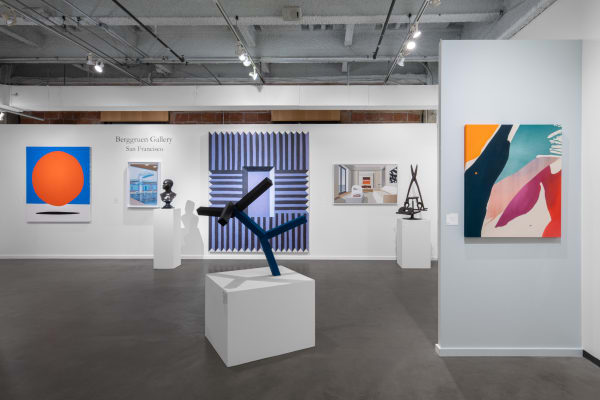
Dallas Art Fair
Dallas, Texas Apr 4 – 7, 2024View More -
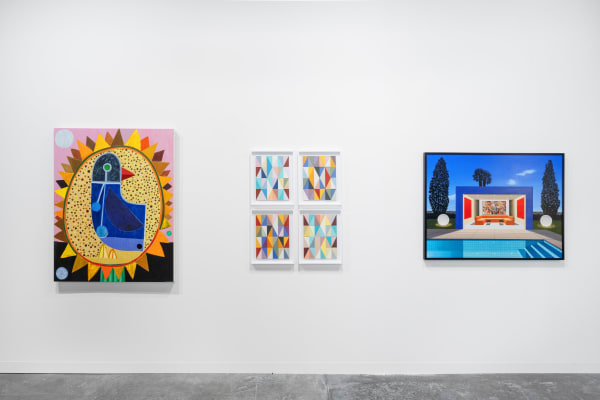
Art Basel Miami Beach
Miami Beach, Florida Nov 29 – Dec 3, 2022View More -

TEFAF
New York City, New York May 6 – 10, 2022View More -
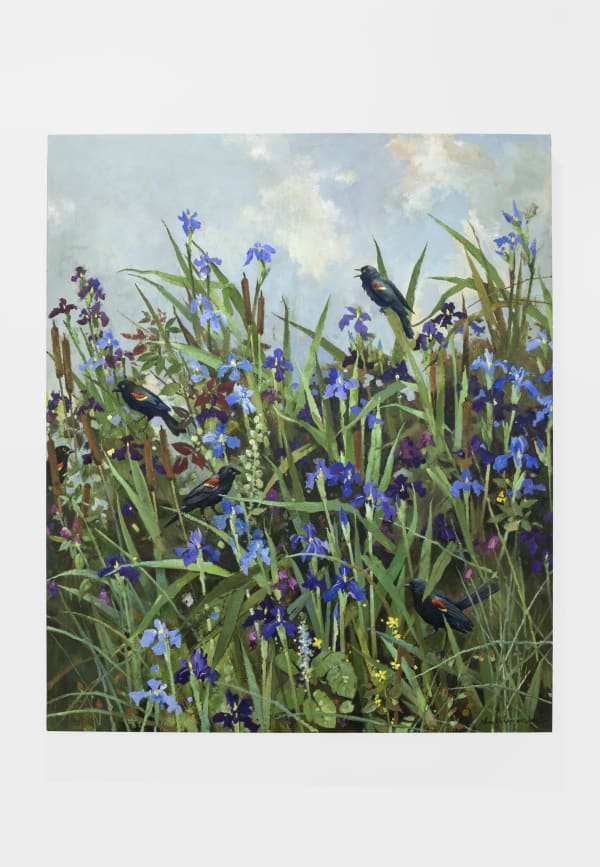
Art Basel Miami Beach
Miami Beach, Florida Dec 2 – 4, 2021Berggruen Gallery is pleased to announce our participation in Art Basel Miami Beach. Please visit us at Booth D3 at the Miami Beach Convention Center.View More -

ADAA The Art Show
New York City, New York Nov 4 – 7, 2021Berggruen Gallery is pleased to announce its participation in The Art Show 2021 organized annually by the Art Dealers Association of America (ADAA). Please visit...View More -

TEFAF
New York City, New York May 3 – 7, 2019Berggruen Gallery is pleased to announce our participation in TEFAF New York Spring 2019 at the Park Avenue Armory. This year our stand will be...View More -
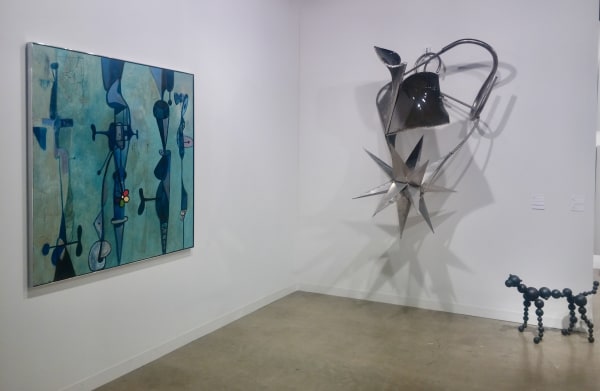
Art Basel Miami Beach
Miami Beach, Florida Dec 3 – 6, 2015John Berggruen Gallery is pleased to announce our participation in Art Basel Miami Beach. Please visit our booth D03 at the Miami Beach Convention Center.View More -
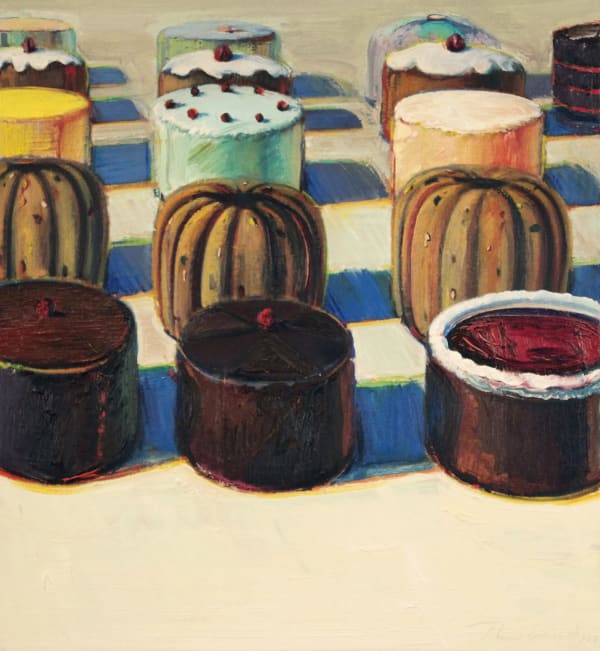
San Francisco Fall Antiques Show
San Francisco, California Oct 22 – 25, 2015John Berggruen Gallery is pleased to announce our participation in The San Francisco Fall Antiques Show, the oldest continuously operating international art and antiques show...View More -

FOG Design + Art
San Francisco, California Jan 16 – 19, 2014John Berggruen Gallery is pleased to announce its participation in FOG Design + Art at Fort Mason Center, Festival Pavilion, San Francisco.View More -

Art Basel Miami Beach
Miami Beach, Florida Dec 6 – 9, 2012John Berggruen Gallery is pleased to participate in Art Basel Miami Beach 2012, at the Miami Beach Convention Center. Please stop by our booth D3....View More -
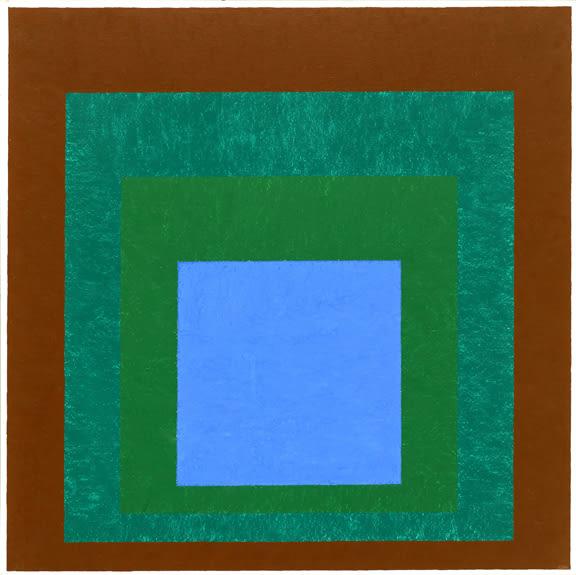
ADAA The Art Show
New York City, New York Mar 2 – 6, 2011Please visit us at booth C13, The Art Show in the Park Avenue Armory at 67th Street in New York. Admission is $20 per day...View More -

Art Basel Miami Beach
Miami Beach, Florida Dec 3 – 7, 2009John Berggruen Gallery is pleased to announce our participation in Art Basel Miami Beach. Please visit our booth at the Miami Beach Convention Center. Hope...View More -
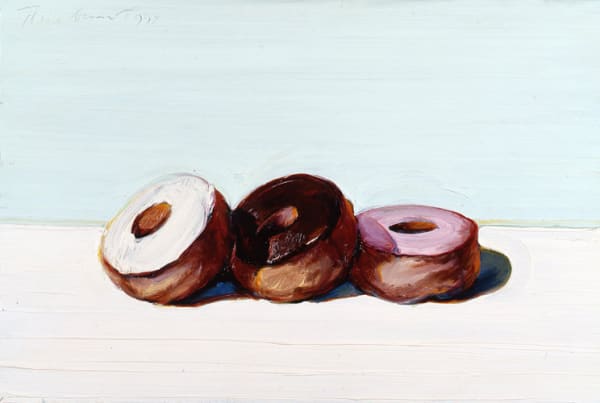
Art Basel Miami Beach
Miami Beach, Florida Dec 3 – 7, 2008John Berggruen Gallery is pleased to announce our participation in Art Basel Miami Beach. Please visit our at the Miami Beach Convention Center. Hope to...View More -

San Francisco Fall Antique Show
San Francisco, California Oct 22 – 26, 2008We are pleased to announce that John Berggruen Gallery will be participating in the San Francisco Fall Antique Show. The fair will take place at...View More -

Art Basel
Basel, Switzerland Jun 4 – 8, 2008John Berggruen Gallery is pleased to announce our participation in Art |39| Basel.View More -

Art Basel Miami Beach
Miami Beach, Florida Dec 6 – 9, 2007John Berggruen Gallery is pleased to announce our participation in Art Basel Miami Beach. Please visit our booth at the Miami Beach Convention Center.View More -

The San Francisco Fall Antiques Show
San Francisco, California Oct 18 – 21, 2007Berggruen Gallery is delighted to participate in the 2007 San Francisco Fall Show. Please visit us at the Festival Pavilion at The Fort Mason Center....View More -
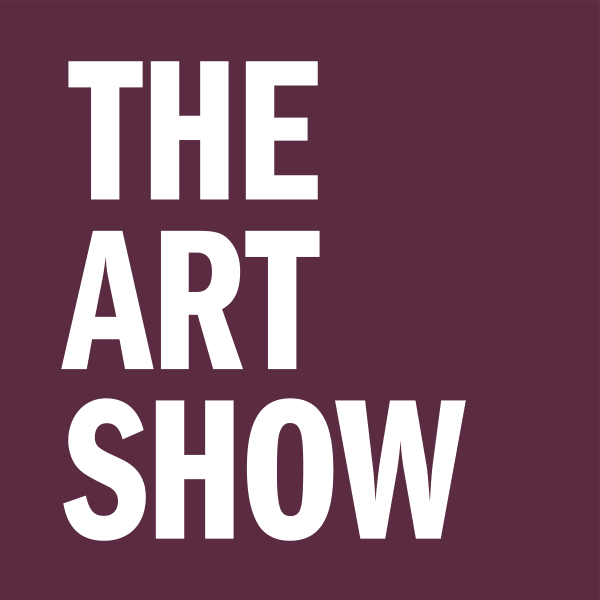
ADAA The Art Show
New York City, New York Feb 21 – 26, 2007John Berggruen Gallery is pleased to participate in The Art Show organized by the Art Dealers Association of America.View More -
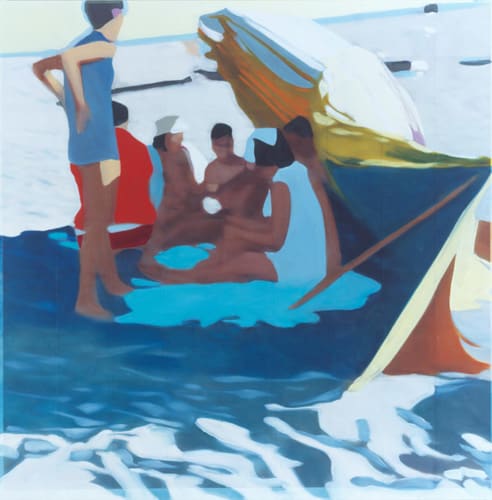
Art Basel Miami Beach
Miami Beach, Florida Dec 7 – 10, 2006John Berggruen Gallery is pleased to announce our participation in Art Basel Miami Beach. Please visit our booth at the Miami Beach Convention Center.View More -

San Francisco Fall Antique Show
San Francisco, California Oct 26 – 29, 2006The 25th Annual San Francisco Fall Antiques Show begins on Thursday, October 26 and closes on Sunday, October 29. We are pleased to announce that...View More -
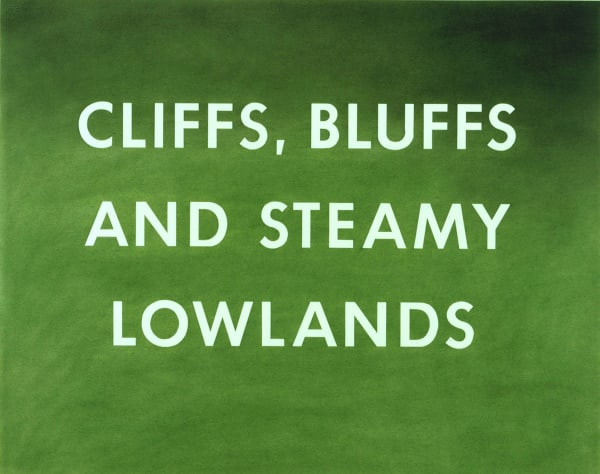
Art Basel
Basel, Switzerland Jun 14 – 18, 2006John Berggruen Gallery is pleased to announce our participation in Art |37| Basel.View More -
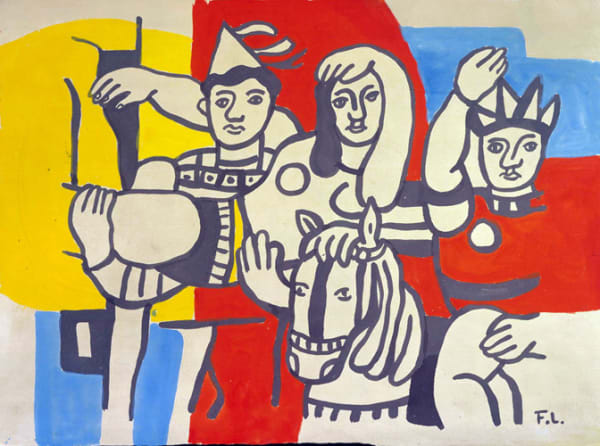
ADAA The Art Show
New York City, New York Mar 2 – 6, 2006Berggruen Gallery is pleased to announce its participation in The Art Show organized annually by the Art Dealers Association of America (ADAA) at the Park...View More -

Art Basel
Basel, Switzerland Jun 16 – 21, 2004John Berggruen Gallery is pleased to announce our participation in Art |35| Basel.View More
-
-
News
-

The Best of The Art Show 2021
White Hot Magazine | By Paul Laster November 1, 2021Presenting a lively selection of contemporary and modernist artworks by an international mix of artists, the 2021 edition of The Art Show kicked off to...Read more -

Four shows: How can we know 'What They Wanted'?
San Francisco Chronicle | By Kenneth Baker July 10, 2010More than a year ago, Jeffrey Fraenkel had an idea for refreshing the conventional gallery summer group show: Ask one artist represented by each of...Read more -

Choosy artists choose this: They Knew What They Wanted at four SF galleries
Bay Area Reporter | By Sura Wood July 2, 2010One has to marvel at the impressive marketing savvy of the four galleries who pooled their resources and p.r., invited four artists from their respective...Read more -

A Fractured Fairy Tale Set on Broadway
New York Times | By Ted Loos September 12, 2004TOM OTTERNESS was standing on Broadway near 137th Street the other day, trying not to feel the weight of sculptural history. He had just learned...Read more
-
-

-
Inquire
Send me more information on Tom Otterness



